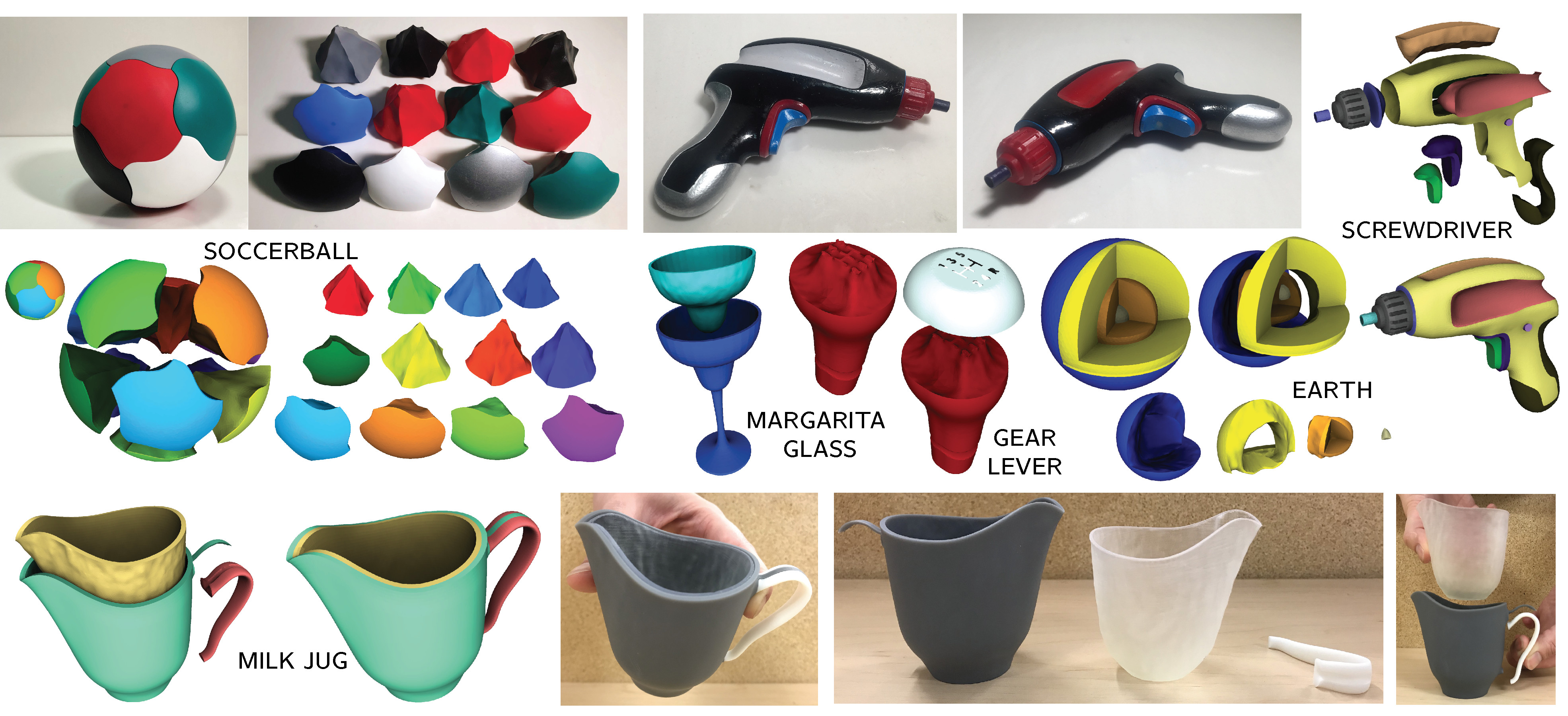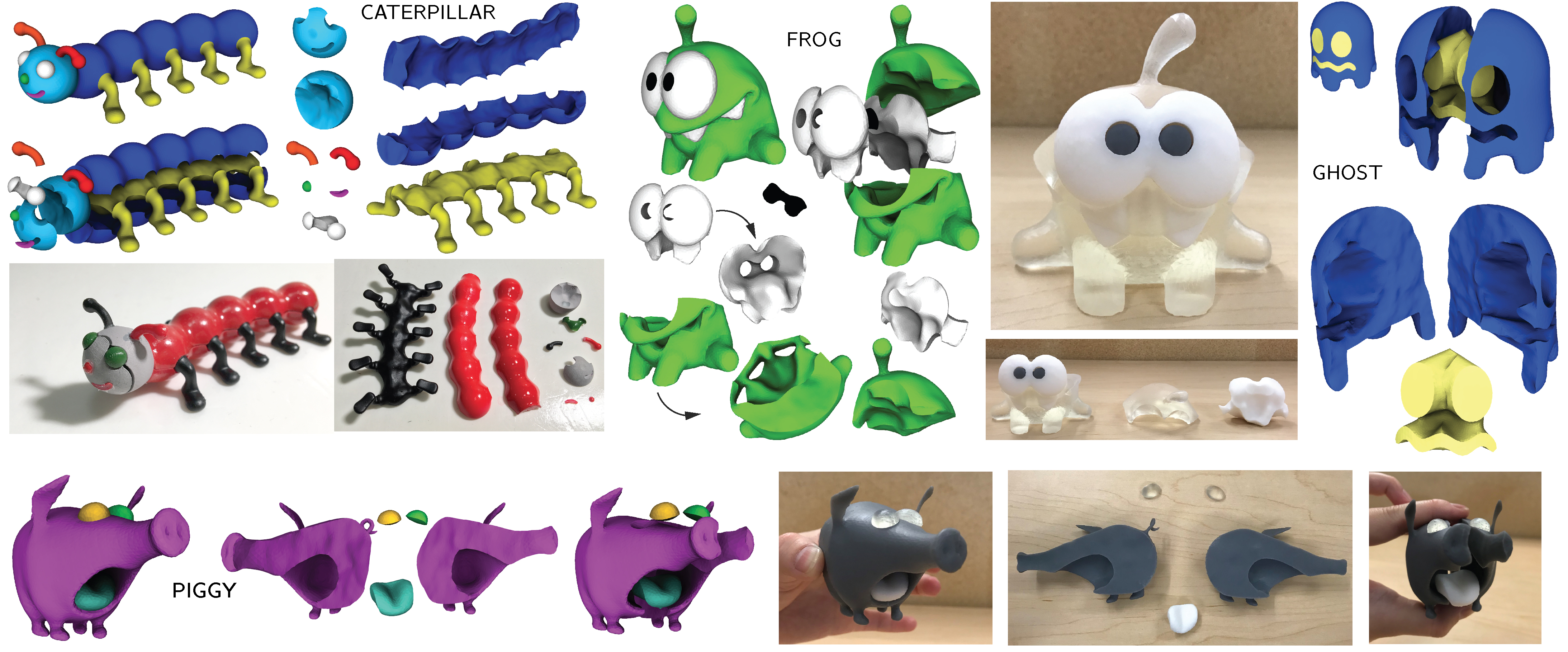- CNR IMATI
- CNR IMATI
- CNR IMATI
- University of British Columbia
- University of British Columbia

Users frequently seek to fabricate objects whose outer surfaces consist of regions with different surface attributes, such as color or material. Manufacturing such objects in a single piece is often challenging or even impossible. The alternative is to partition them into single-attribute volumetric parts that can be fabricated separately and then assembled to form the target object. Facilitating this approach requires partitioning the input model into parts that conform to the surface segmentation and that can be moved apart with no collisions. We propose Surface2Volume, a partition algorithm capable of producing such assemblable parts, each of which is affiliated with a single attribute, the outer surface of whose assembly conforms to the input surface geometry and segmentation. In computing the partition we strictly enforce conformity with surface segmentation and assemblability, and optimize for ease of fabrication by minimizing part count, promoting part simplicity, and simplifying assembly sequencing. We note that computing the desired partition requires solving for three types of variables: per-part assembly trajectories, partition topology, i.e. the connectivity of the interface surfaces separating the different parts, and the geometry, or location, of these interfaces. We efficiently produce the desired partitions by addressing one type of variables at a time: first computing the assembly trajectories, then determining interface topology, and finally computing interface locations that allow parts assemblability. We algorithmically identify inputs that necessitate sequential assembly, and partition these inputs gradually by computing and disassembling a subset of assemblable parts at a time. We demonstrate our method's robustness and versatility by employing it to partition a range of models with complex surface segmentations into assemblable parts. We further validate our framework via output fabrication and comparisons to alternative partition techniques.
 A gallery of both digital and fabricated results obtained with our method.
A gallery of both digital and fabricated results obtained with our method.
 Example inputs that require surface segmentation refinement to enable partition and our outputs.
Example inputs that require surface segmentation refinement to enable partition and our outputs.
Note: some of the input models shown are copyrighted by third parties and used with their permission. See the Acknowledgements section of our paper for details.
@article{ACALVS19,
author = {Ara\'{u}jo, Chrystiano and Cabiddu, Daniela and Attene, Marco and Livesu, Marco and
Vining, Nicholas and Sheffer, Alla},
title = {Surface2Volume: Surface Segmentation Conforming Assemblable Volumetric Partition},
journal = {ACM Transaction on Graphics},
year = {2019},
volume = {38},
number = {4},
doi = {https://doi.org/10.1145/3306346.3323004},
publisher = {ACM},
address = {New York, NY, USA}
}
